16 Types of Ficus Trees to Grow Indoors & Outdoors
Author: Jen Worst | Editor: Omar Alonso
Review & Research: Jen Worst & Chris Miller

If you're a plant person, you must be familiar with at least some of the types of ficus. Ficus, commonly known as the fiddle leaf figs, are some of the most beautiful plants. These plants are common inhabitants of the tropical rain forests, but with a bit of care, they can adjust in your home spaces as well.
Ficus trees are grown all around the world today for their delicious fruit as well as ornamental plants.
So, if you're looking for the best ficus varieties to add more greenery to your home, we've got your back. We've categorized some of the common and dominant varieties of ficus that you can grow in your little garden.
16 Types of Ficus
Something very interesting for you to look into as a piece of trivia is the mutualism with pollinating fig wasps that these species go through. Each fig plant species is pollinated by one or several, but very few, fig wasp species that evolved together, meaning that if those wasps aren't present in the environment, the fig trees can't spread on their own, keeping them from being invasive.
Although the genus Ficus consists of about 850 species, we've compiled a list of the top varieties of ficus that you can grow at home, whether indoors in a planter or outdoors in the yard.
Weeping Fig (Ficus benjamina)
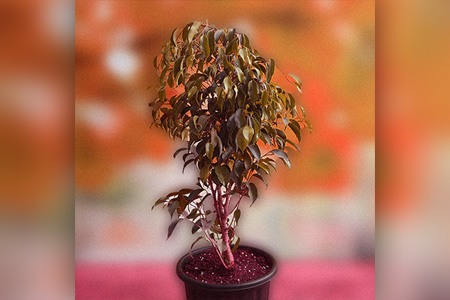
Probably the most common ficus species in most homes is the Ficus benjamina. It is prevalent among plant lovers because of the dark and glossy leaves and easy maintenance.
You don't need a lot of light or water to take care of these fig trees. They survive in the most unfavorable environments with minimum light or water.
Another reason why most people love growing this particular fig species is because of its rapid growth rate. The Ficus benjamina can grow as tall as 4 meters in the shortest amount of time.
This tree tends to shed its leaves when it's transported to a new location, which is why it is also known as a weeping tree. My grandmother used to grow this ficus species indoors alongside her collection of dwarf umbrella trees.
Fiddle Leaf Fig (Ficus lyrata)
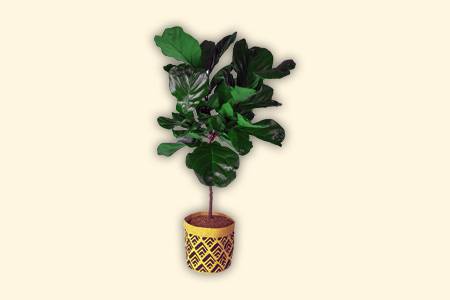
If you want something decorative for your home, Ficus lyrata will be the best choice. This particular species of ficus is quite famous nowadays because of its beautiful appearance. This ficus species looks gorgeous in any space of your home and definitely enhances the beauty of your home.
This small fig tree does not grow beyond 45-50 cm. Although it is a small tree, it comprises very prominent leaves. The extra care you need to take with these fig trees is to avoid exposing them to direct sunlight.
Although it sounds weird, this is a fact applicable to the Ficus lyrata. When exposed to direct sunlight, this fig tree can experience burned leaves. The best temperature to grow these fig trees is around 15-22°C.
Amstel King (Ficus binnendiijkii 'Alii.')

You may know these varieties of ficus as Ficus Amstel, Banana Leaf Ficus, Saber Ficus, and Ficus Alii. This plant hails from India and China. Not only does it appear tall due to the long trunk with leaves blooming on top, but the leaves themselves are long and narrow as well.
These types of ficus trees can grow up to 8 feet if you keep it indoors in a large enough planter. It doesn't require a lot of care. If you want a handsome tree with olive green leaves, look no further than these ficus types right here.
Rubber Plant (Ficus elastica)
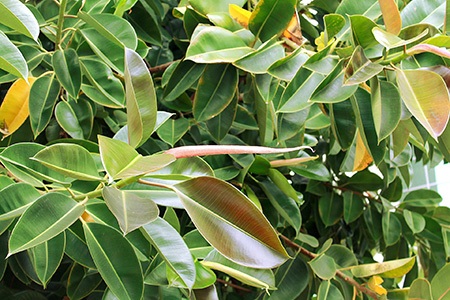
Ever read of a rubber fig tree? The Ficus elastica is a unique fig species known as a rubber tree. This species bears dark green to red oval leaves, which look very beautiful at any corner of your home.
Under low light, the leaves can look almost purple, which can make your home look very pleasant and splendid. The leaves also bear some blotches, making them look like the F. benjamina.
The rubber fig tree grows to a maximum of 40 meters, which is why most people love placing them in the living rooms or next to their shelves. This tree grows under full to partial sunlight and free-drained soil.
To add to the confusions, there's also the Ficus decora and the Ficus robusta, both of which are also called the Rubber Plant or Rubber Tree Plant.
Ficus Ginseng (Ficus microcarpa)
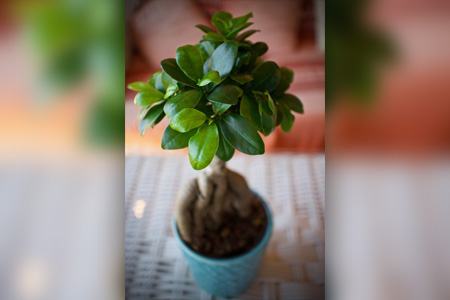
The Ficus microcarpa has many different names since it has multiple roots of origin, starting from India to Malaysia. Most people know it as the Indian Laurel, but many refer to it as the Chinese Banyan and even Green Island Ficus.
It is a miniature tree that also resembles a bonsai to some extent. Most people love this particular species of Ficus because of how pretty and tiny it is. Just put it in the corner of your home, especially beside your windows or study table, and it looks breathtaking.
The F. microcarpa grows to almost 1 meter in height and survives in temperatures of 12-15°C. It has flat and oblong leaves that make the plant look unique.
African Fig (Ficus cyathistipula)
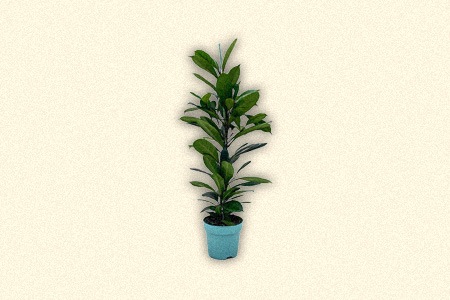
You may know these different types of ficus trees as River's Gift, Ficus rederi, Ficus nyanzensis, Ficus rhynchocarpa, and Ficus callescens. The name African Fig is derived from the fact that this plant is native to Africa, in fact the tropical areas.
It's a small tree, relative to other types of ficus. The leave have rounded tips that take on a dark green color. It can grow up to 6 feet tall indoors. People say it has a way of cleaning the air in a room, too, if that interests you.
Red Leaf Fig (Ficus congesta)

The Ficus congesta is also known as the cluster fig tree. Native to Indonesia and the Philippines, these trees bear a unique appearance and look breathtakingly beautiful in different homes.
Ficus congesta bears gorgeous red leaves that appear curled up in the beginning. Later, the red leaves make the plant look very impressive when they unfold. If you're looking for a beautiful fig tree to decorate your home, this one would be a great choice.
The red leaves look so pretty next to various types of dogwood trees when they're all in bloom, which is what my parents once did in this one flower bed in the side lawn.
Lofty Fig (Ficus altissima)
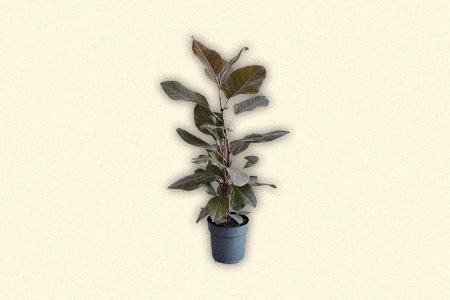
Also known as the Council Tree, this is a species of ficus that is native to southeastern Asia. It produces large leaves and is evergreen.
Another interesting fact is these ficus types are epiphytic, meaning that it will latch onto and grow on another tree (like a vine), but is not parasitic. It will smother out the host by blocking sunlight, though.
Common Fig (Ficus carica)
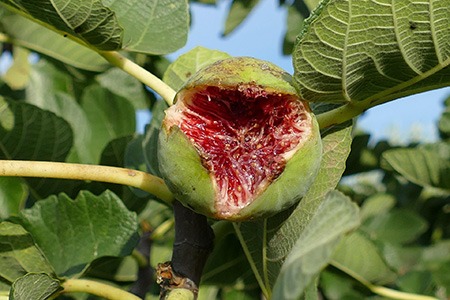
The Ficus carica is another common fig species that people love to grow in their homes. Not only is this an ornamental piece, but it provides the most delicious fig fruit. As the name suggests, these are very common types of fig trees compared to others.
The fig fruit from this tree comprises lots of vitamins and minerals. It is also a very rich energy source for people living in cold and dry areas.
F. carica does not require pollination for developing fruits. This fig tree produces fruit with the help of a unique method, parthenocarpy. They grow to a height of around 20 feet so that you can place them in the living rooms, bedrooms, or even corridors.
Creeping Fig (Ficus pumila)
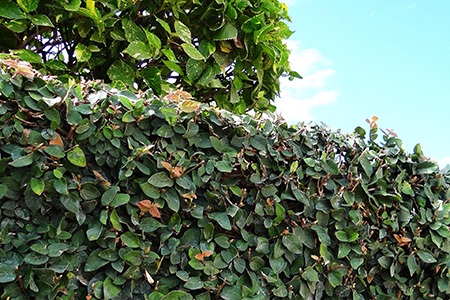
If you're a fan of vines, you'd love this ficus species called Ficus pumila. These vines are known as climbing figs and creeping figs. It grows at a fast rate and looks beautiful in any space of your home.
Usually, these vines adhere to the walls of a home and grow to a height of 10-20 feet. The vines of these types of ficus are hard to detach, which can be problematic for people who frequently change homes.
A notable feature of this fig tree is its ability to survive in hot and humid regions. They can even thrive in areas with little water, so you don't need to go to extreme lengths to take care of this plant.
The plant's dark green leaves are stunning and look splendid around the windows. Outside the home, I always think ficus around the windows and shorter types of arborvitae at the street.
Mareton Bay Fig (Ficus macrophylla)
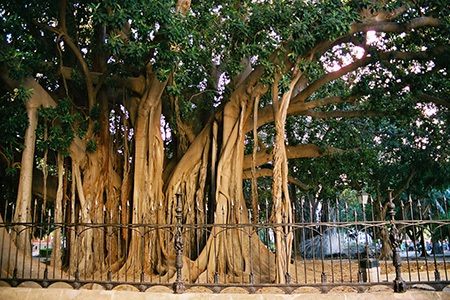
The Ficus macrophylla species is another well-known plant in different households. This plant, also known as Australian banyan, is primarily seen among Australian homes due to its origin; it is a beautiful fig tree with remarkable heights.
These ficus varieties grow to almost 150 feet in length, which is pretty great for a fig tree. It has enormous roots that appear curved and arched. The roots rise above the soil and appear as a central plant feature.
These plants need a lot of shade to grow in due to their rapid growth. They also bear large leaves that look stunning under different light conditions.
Although these fig trees can bear fruits, the fruits aren't very palatable. They are commonly known as strangler figs since they grow on host trees and cause some form of harm like diminishing the sunlight, absorbing nutrients, etc.
Mistletoe Fig (Ficus deltoidea)
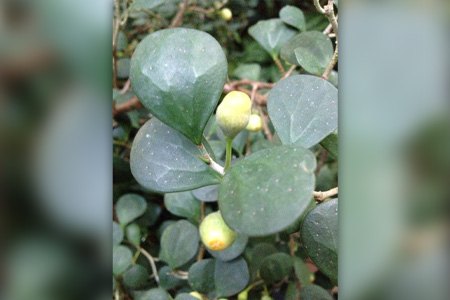
The mistletoe fig has interesting leaves that are its signature hallmark. These leaves are rounded at the tip and are thick. The tops of the leaves are green but the underside are a golden yellow color.
It also produces light green fruits that are small in size and edible. Add these fruits to the distinct nature of the leaves and people feel these varieties of ficus resemble mistletoe. It grows best in the USDA Hardiness Zone 10.
You can tell the male trees from the females because the first produces longer leaves while the second produces larger ones in general. Both will grow to 6 feet outdoors and 3 feet in height indoors,which is so small compared to other types of ficus that people consider it a shrub.
Ficus Audrey (Ficus benghalensis)
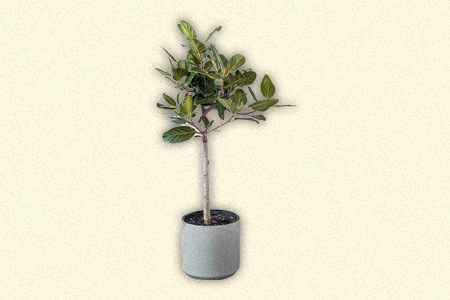
The Ficus benghalensis is one of the most popular fig trees to exist today. It is a common fig tree in the Indian subcontinent and is known to be a tree with cultural significance. It's also known as the Strangler Fig and Banyan Tree.
However, it is popularly known as the Ficus Audrey in the western world. It is also a strangler fig, meaning it grows through the cracks of a host tree and deprives it of sunlight and nutrients.
The tree covers a large area by forming roots that spread in different directions. It requires medium light conditions and well-drained soil to grow. They have fuzzy leaves which are bright green in color with faded veins.
Burgundy Rubber Tree (Ficus burgundy)
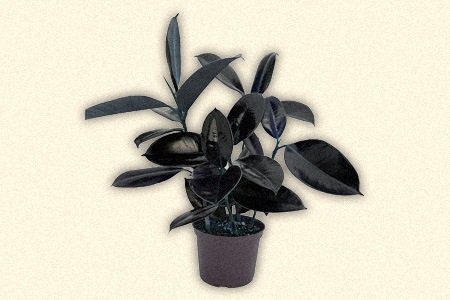
Like the Ficus elastica, the Ficas burgundy is also a notable rubber plant. Also known as Abidjan, this beautiful tree is a common inhabitant in many households.
One of the main reasons people love having these ficus types in their homes is their dark red leaves that turn to a shade of burgundy under low light. The beautiful burgundy leaves make the plant look exquisite.
If you're looking for an ornamental piece for your home, the Ficus burgundy would be an excellent choice.
Sacred Fig (Ficus religiosa)
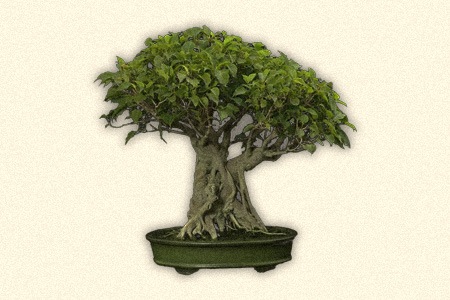
Native to India, it received its name after developing significance for several religions (Buddhism, Hinduism, and Jainism) in the region. It's said the Buddha meditated under this type of ficus tree.
This tree can reach 100 feet in height and can survive over 2,000 years. It's considered invasive because it'll take root and grow rapidly. As you can understand by its size, this can be a real nuisance.
Lollipop Tree (Ficus Daniella)
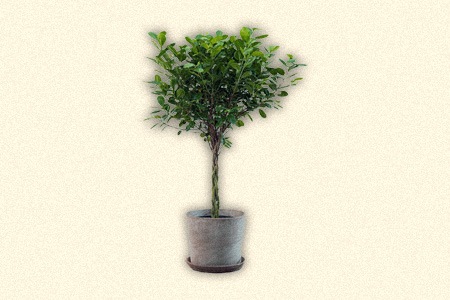
Sometimes called the Ficus Moclame and Ficus Danielle, this ficus variety makes a great indoor plant with its waxy leaves that are smaller but thicker, in a gentle oval shape. It will need a lot of light but not direct sunlight either. You'll need to mist the plant regularly to keep the humidity around it high enough.
Types of Ficus Trees to Explore Great Variety
Now that you've acquired all the information on the different types of ficus trees, it can be easier for you to pick a plant for your home effortlessly. You can analyze your living environment and weather conditions to determine which ficus species will work best for you.



